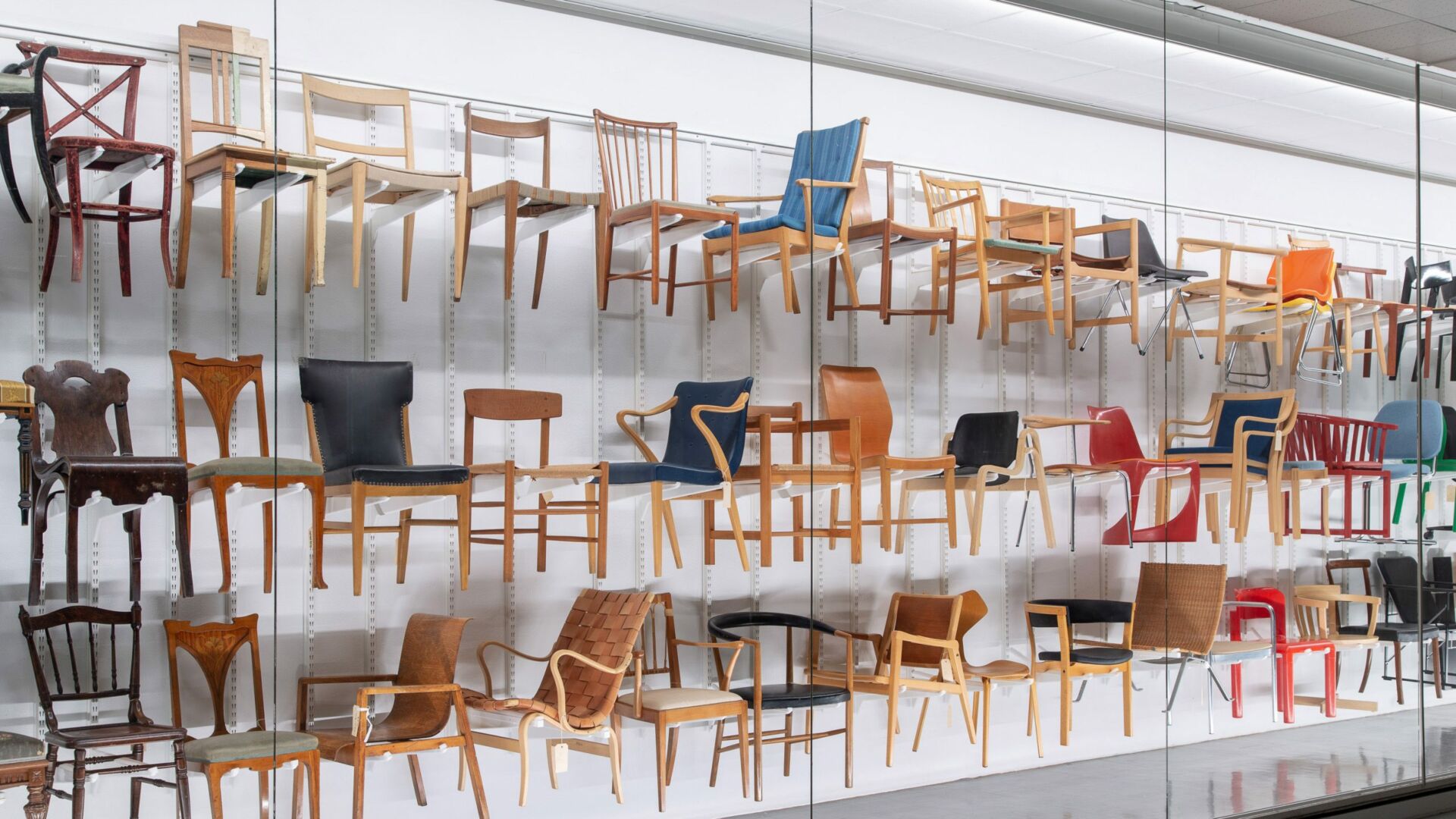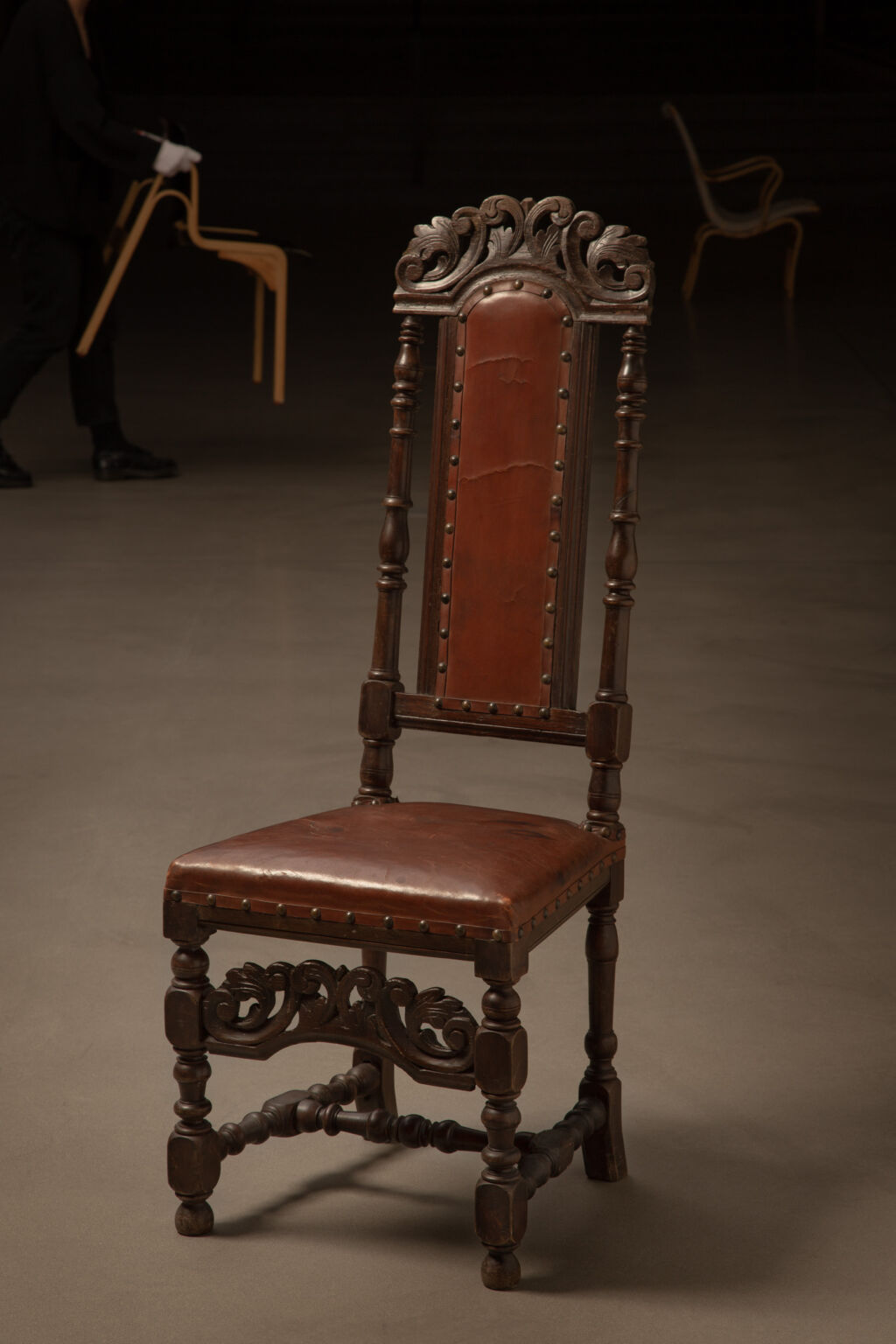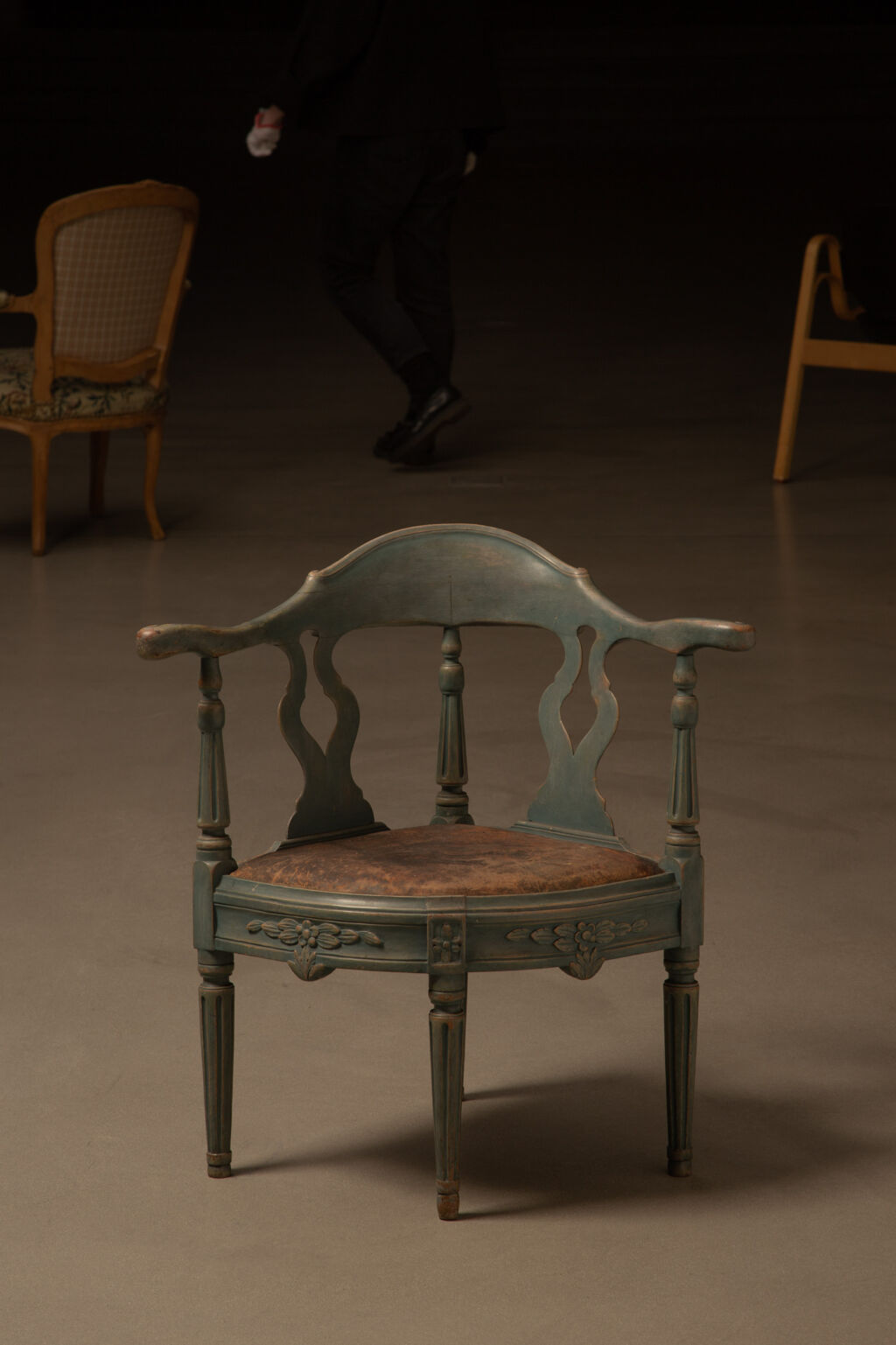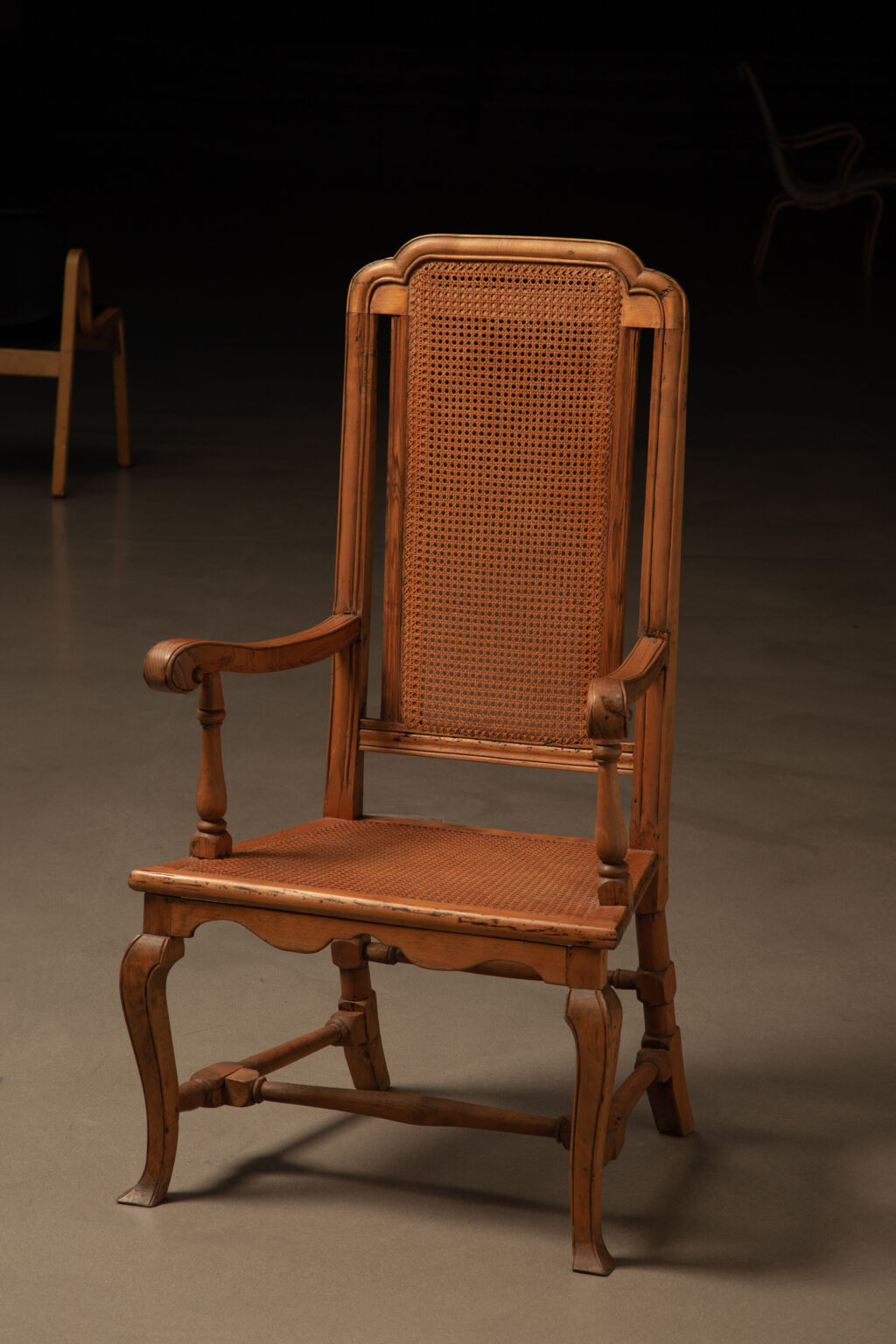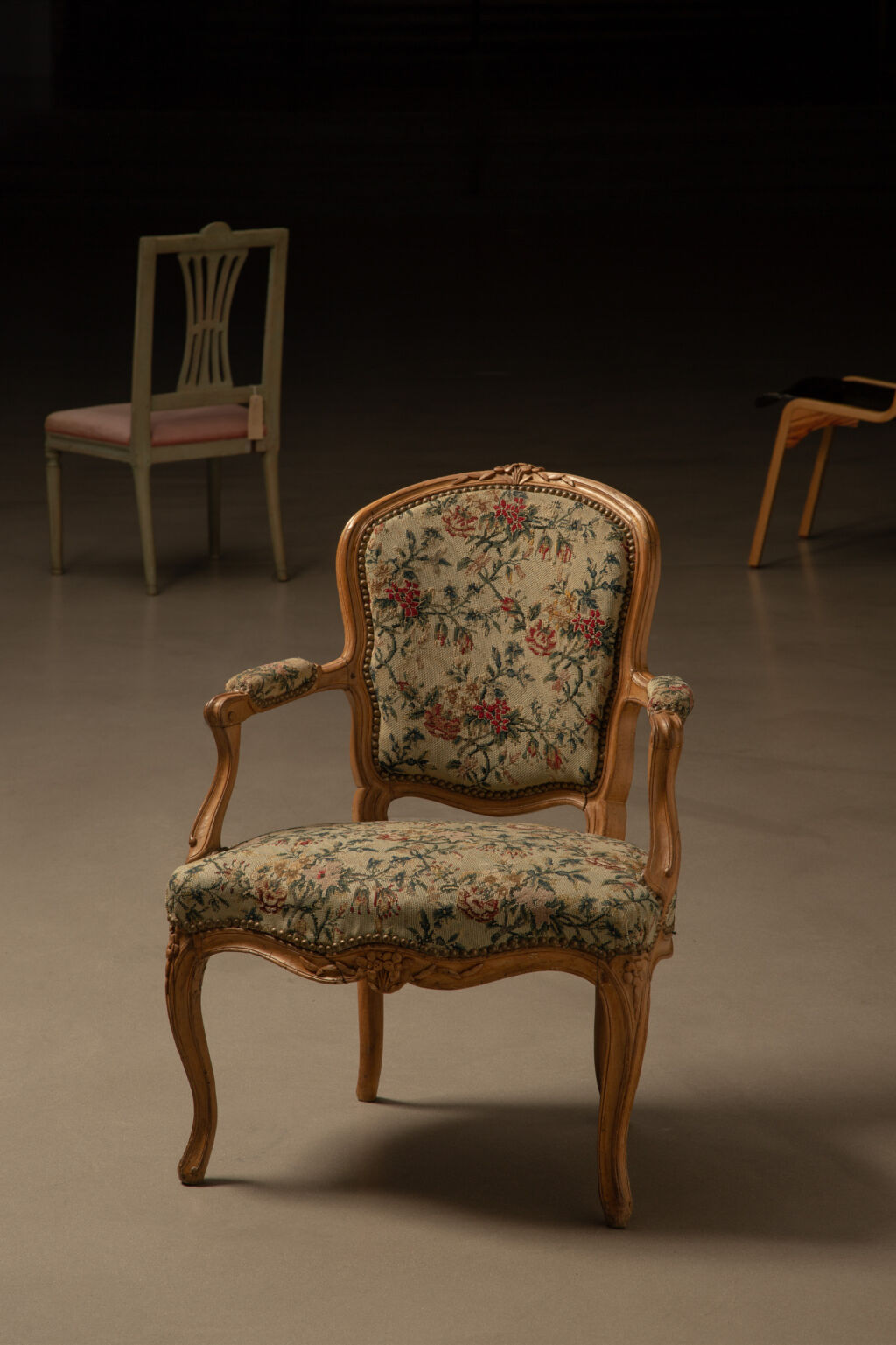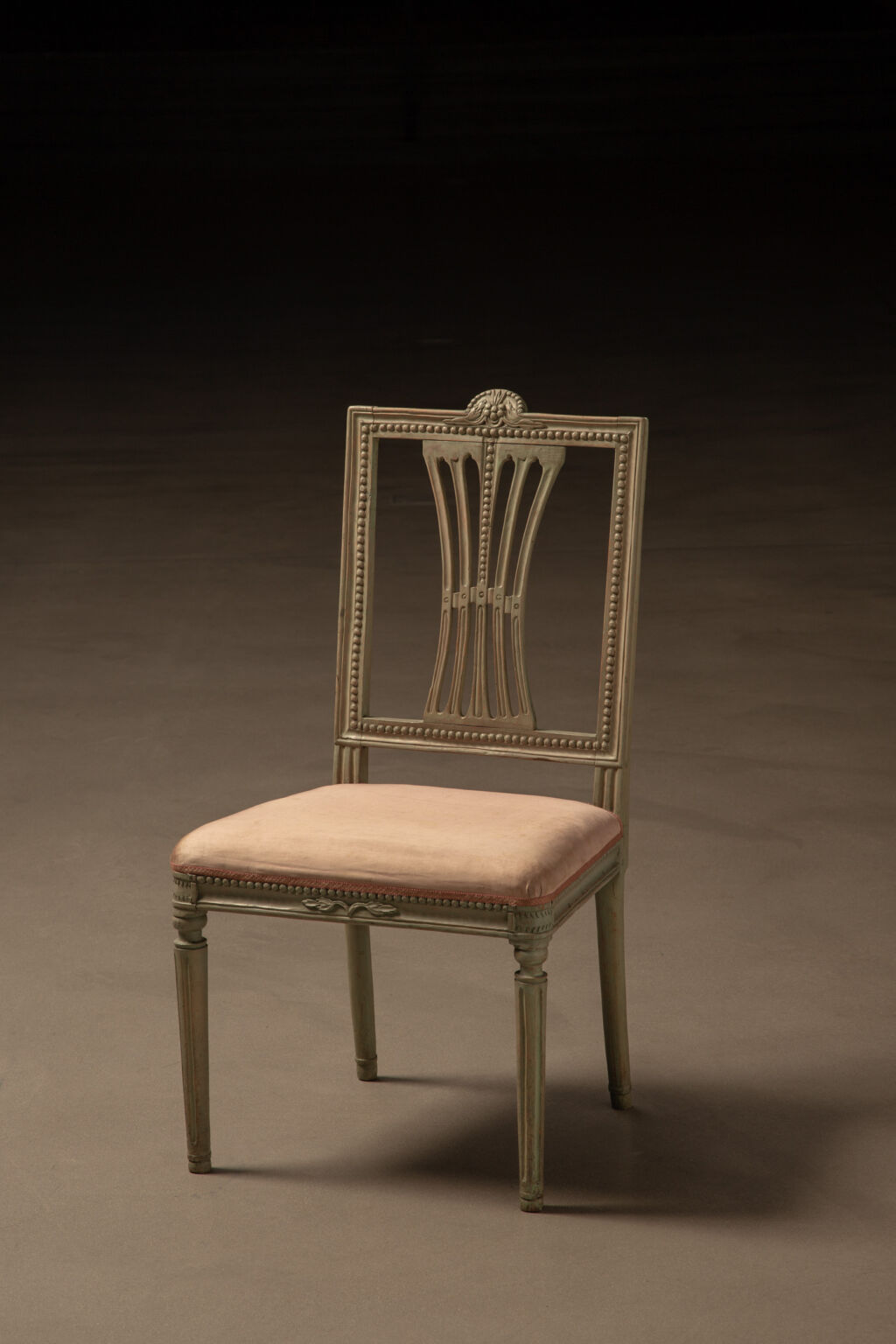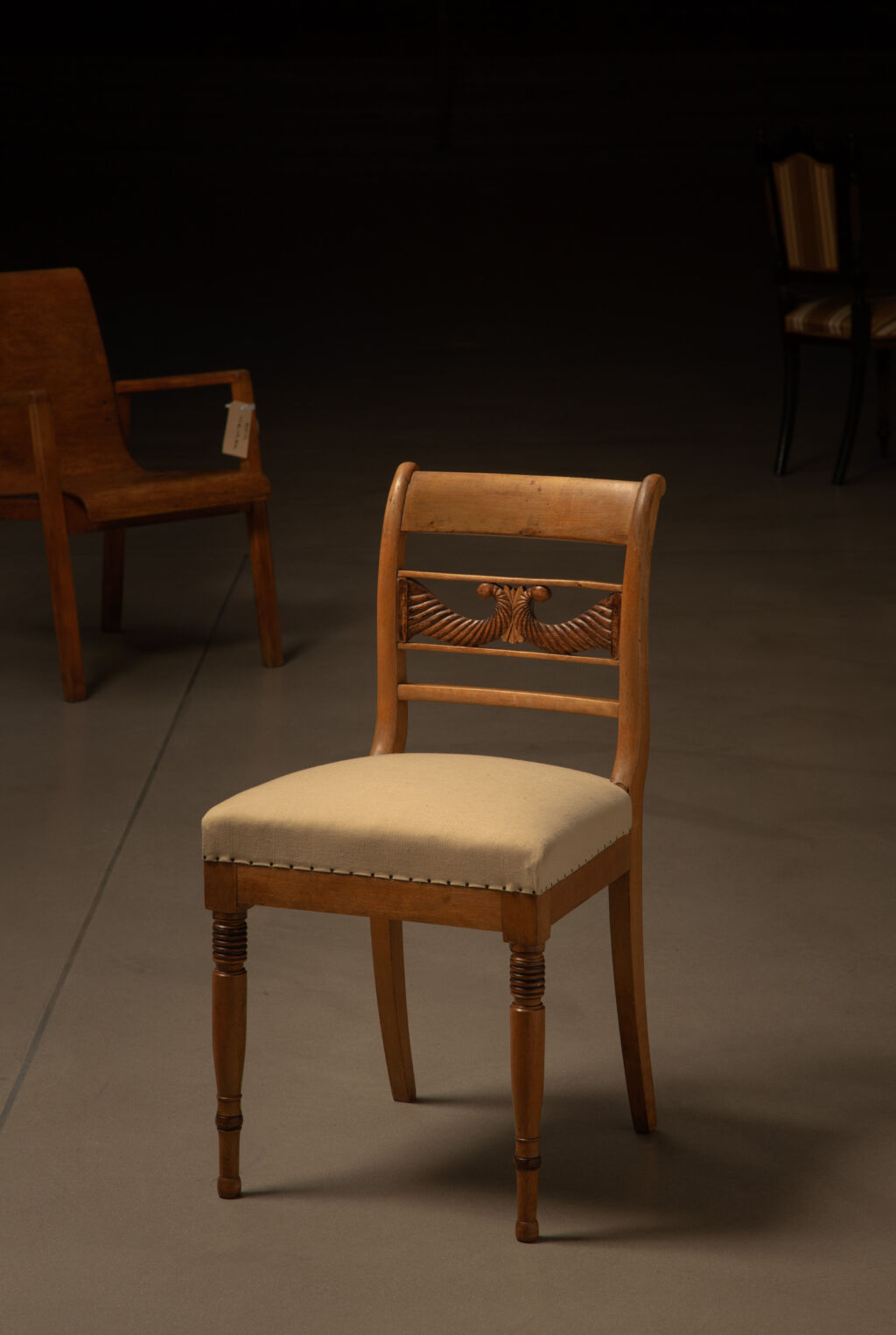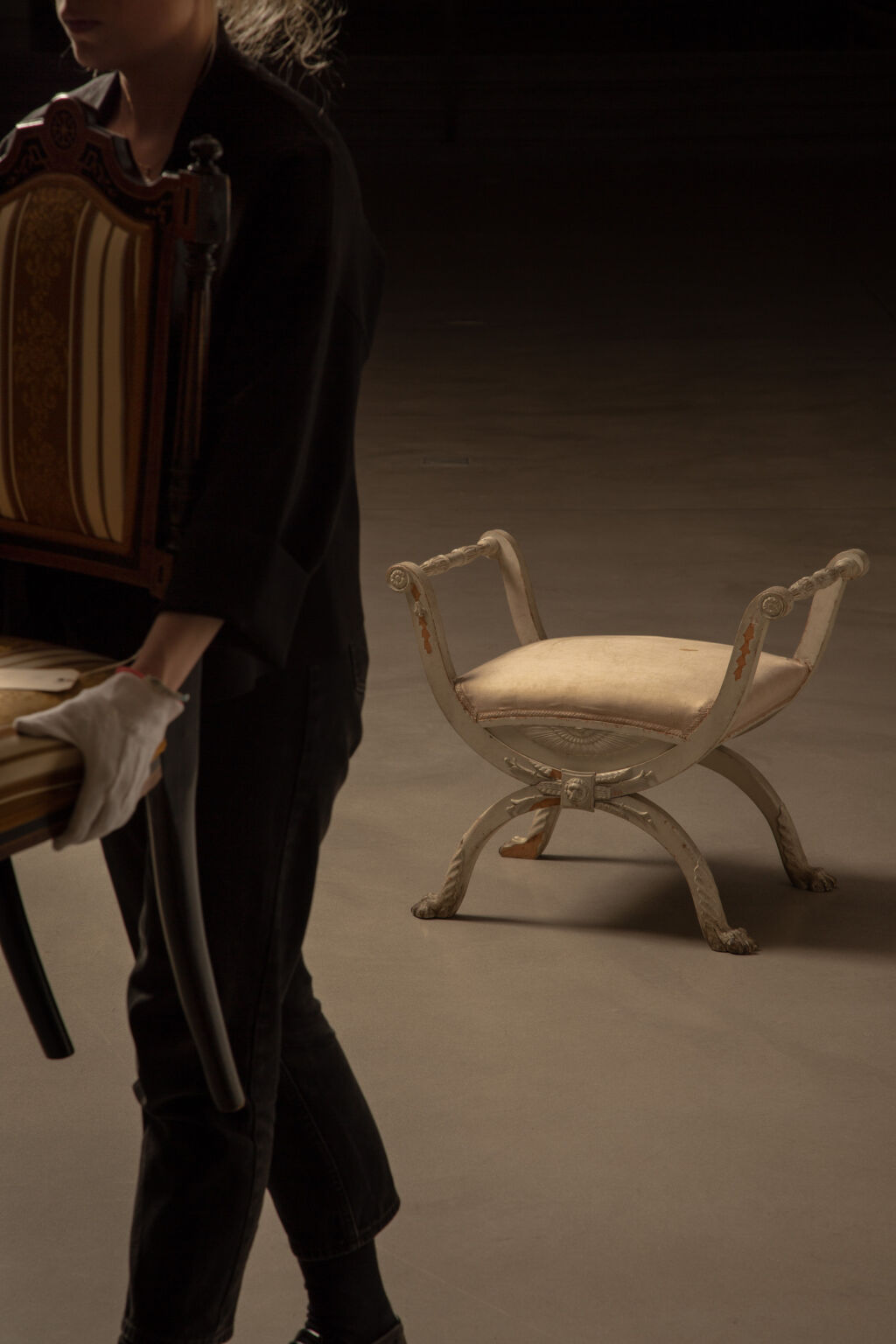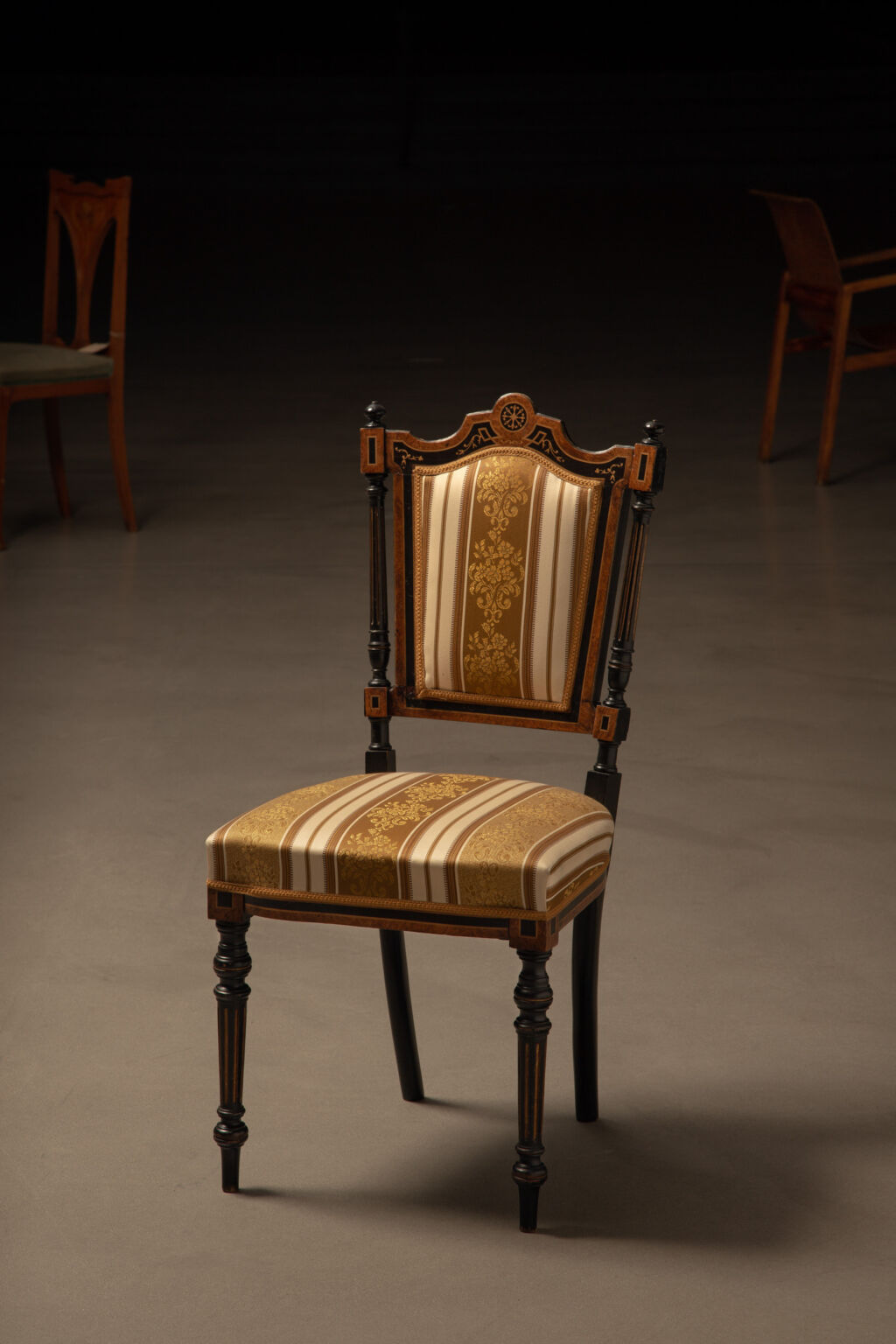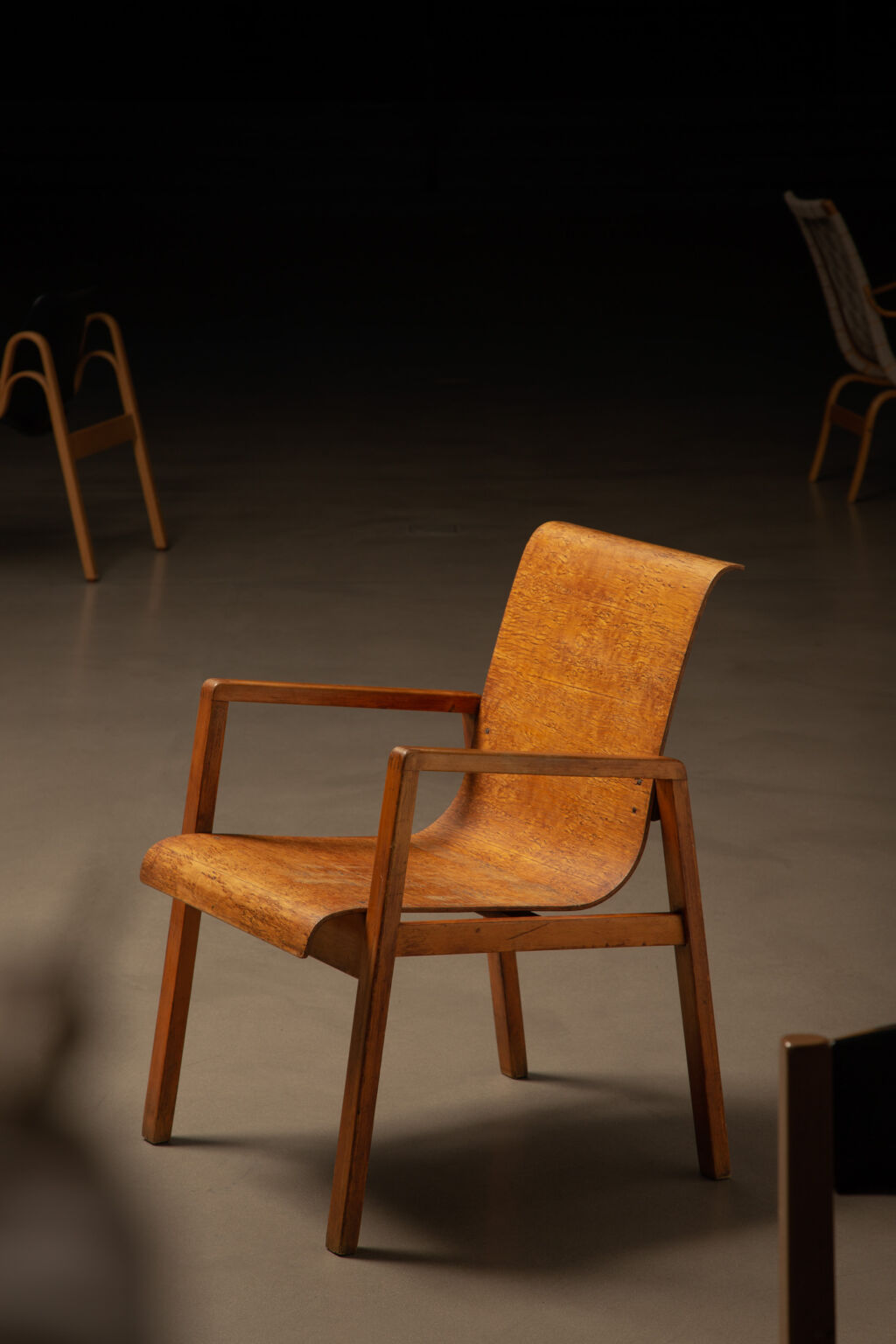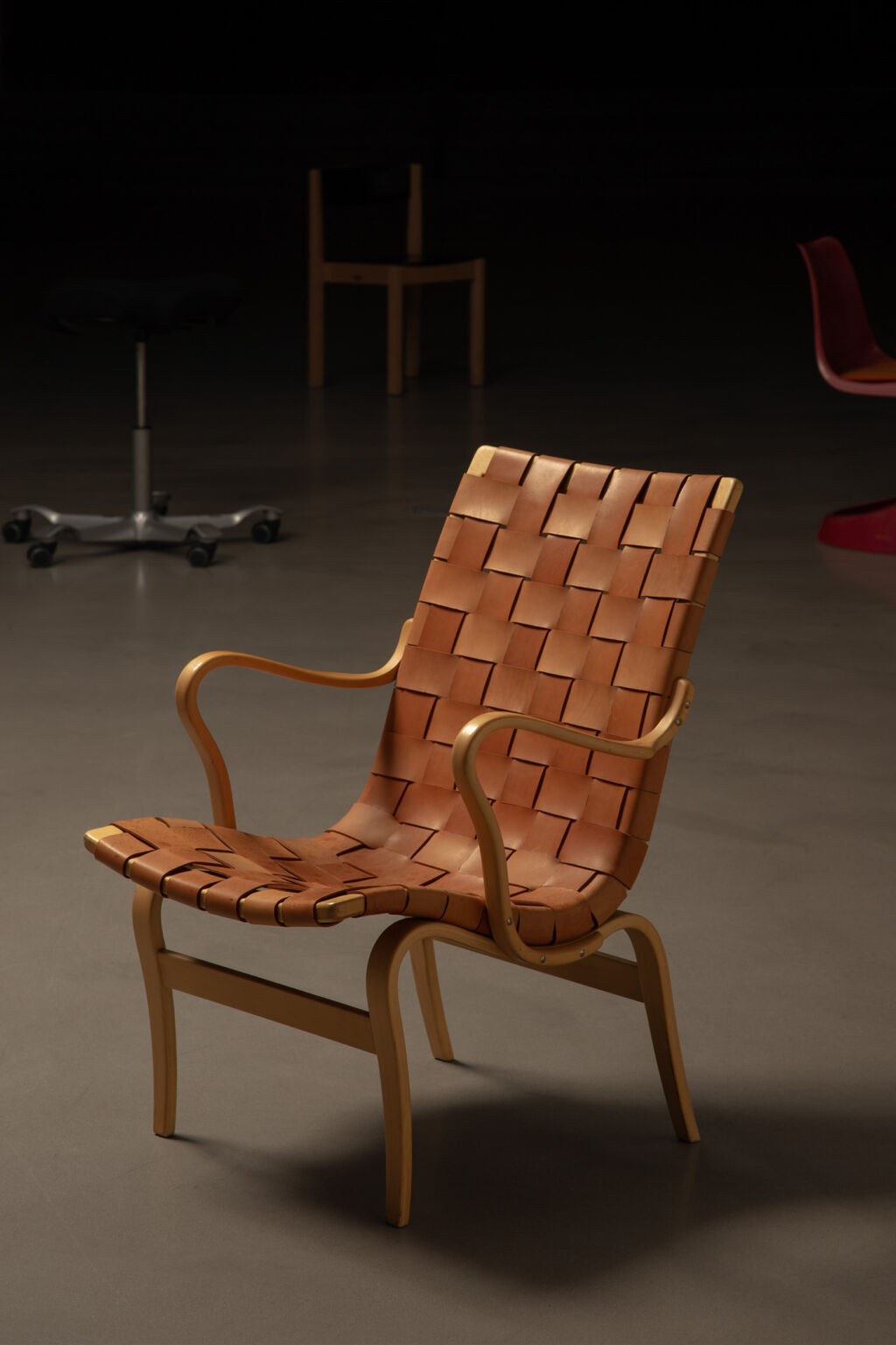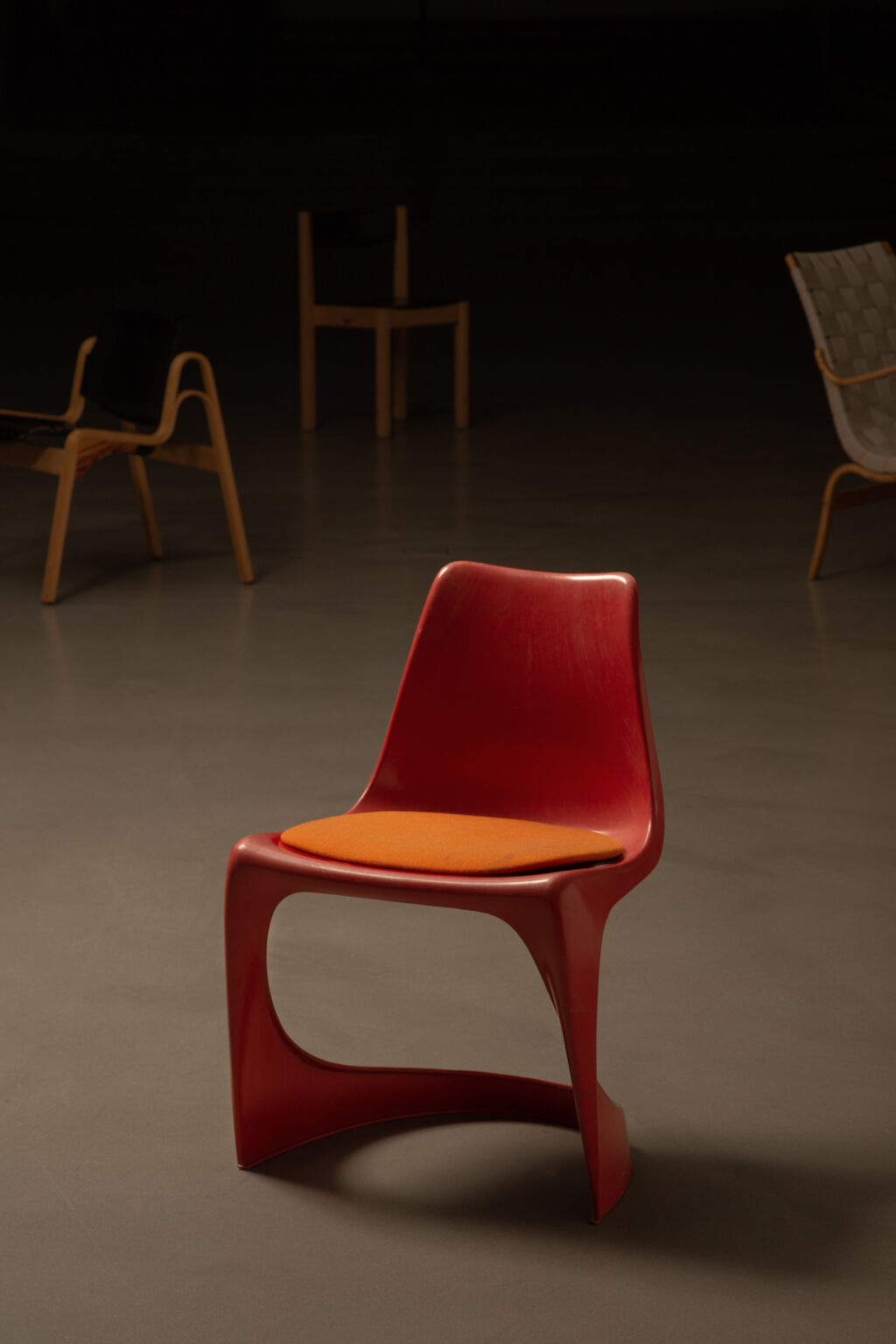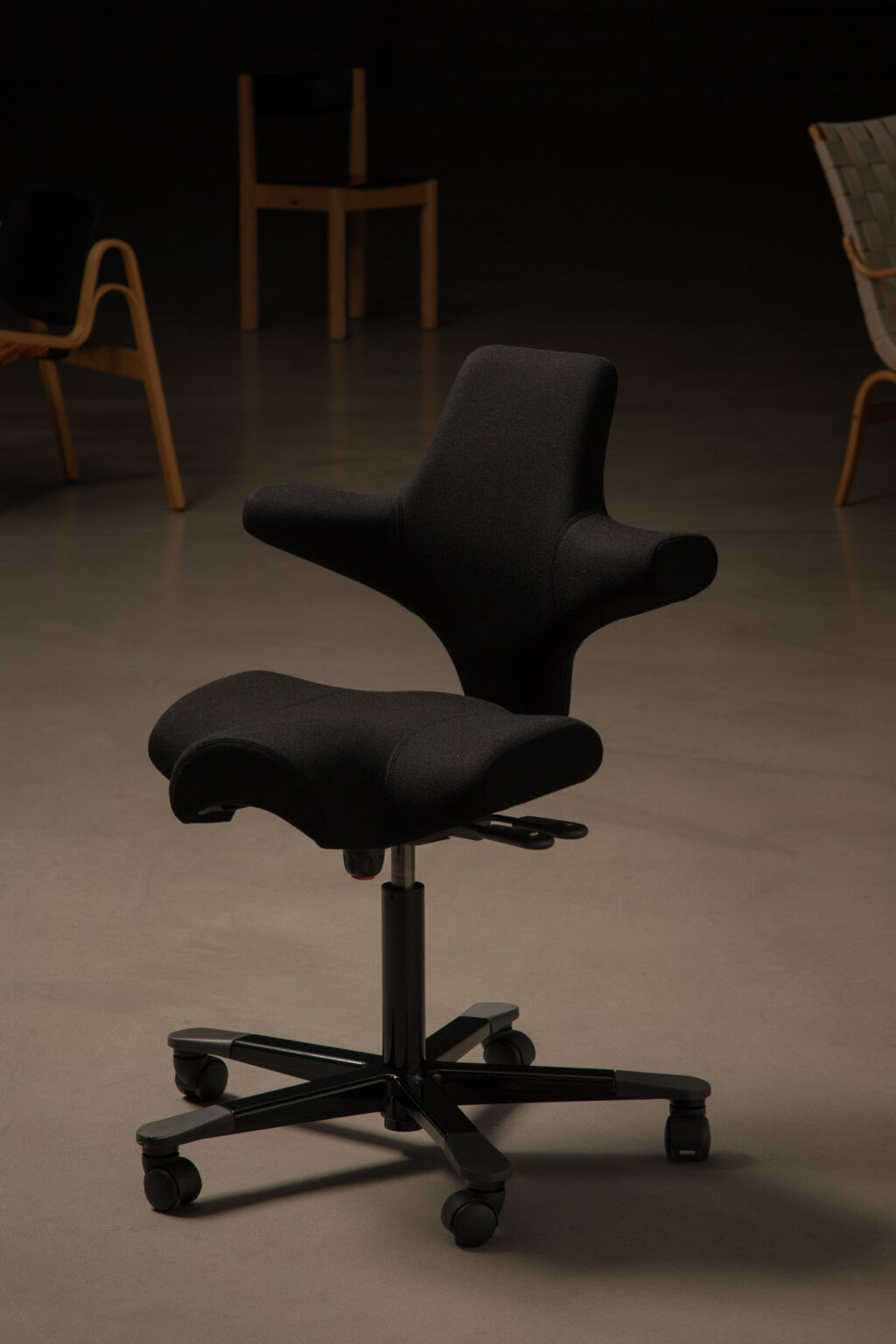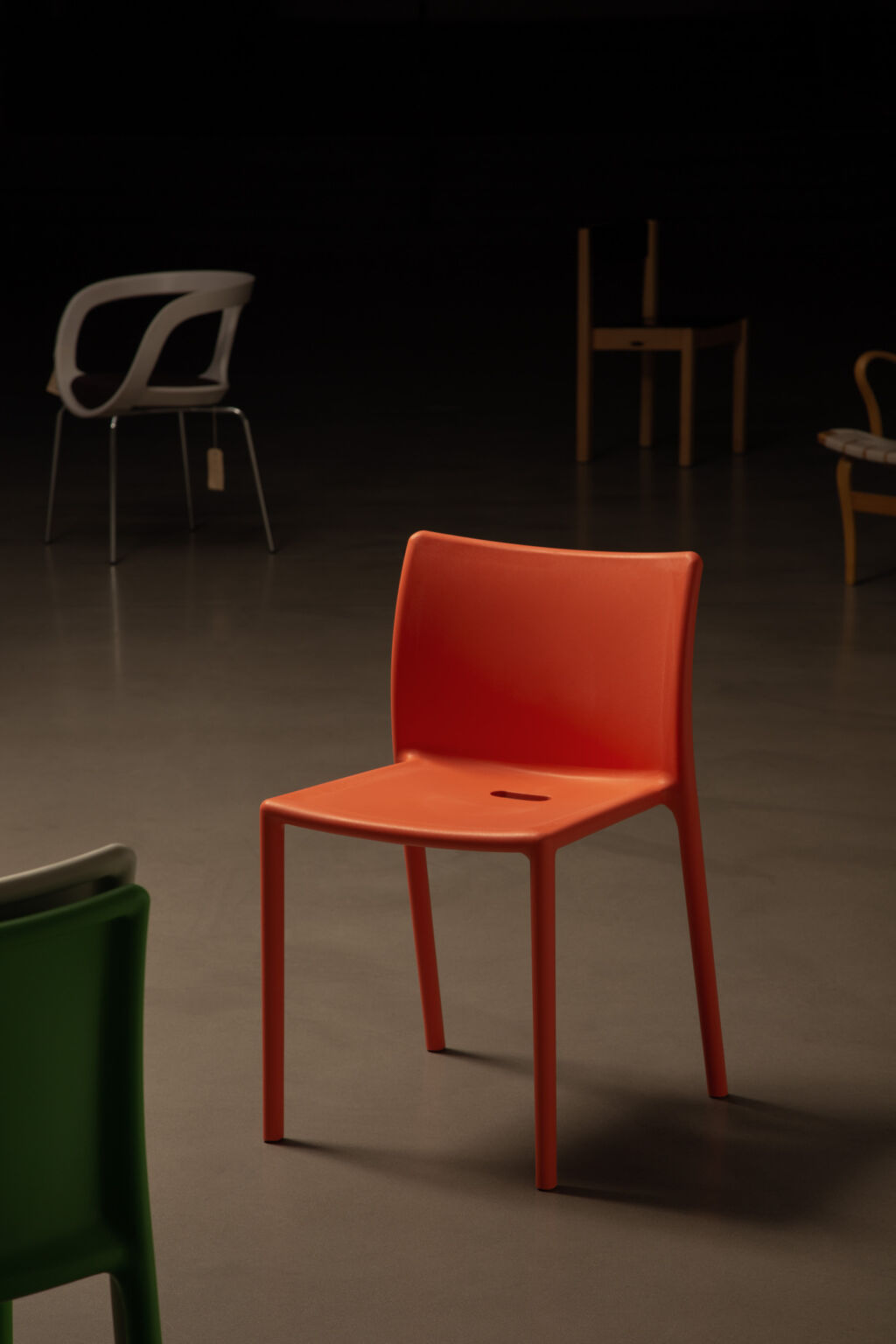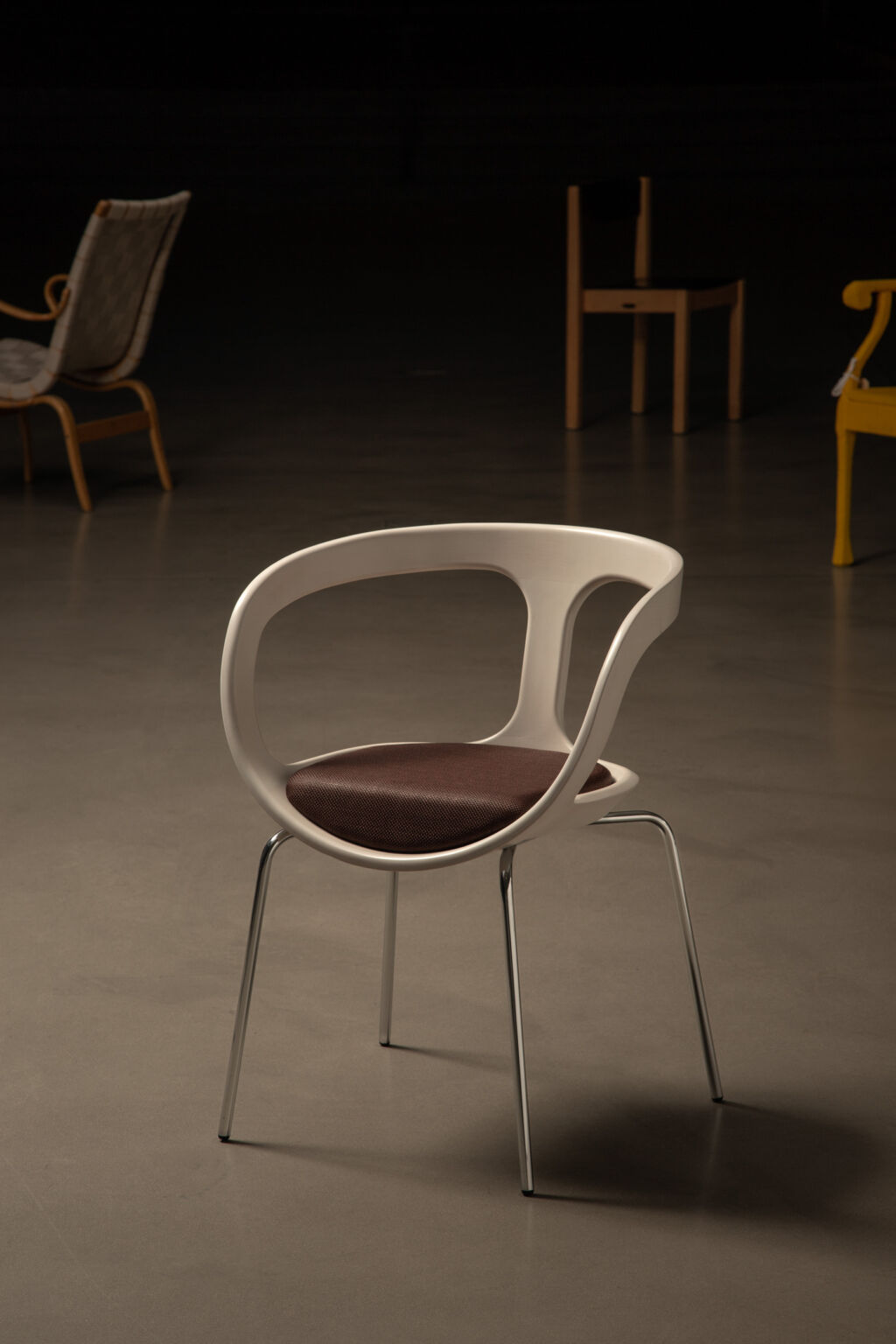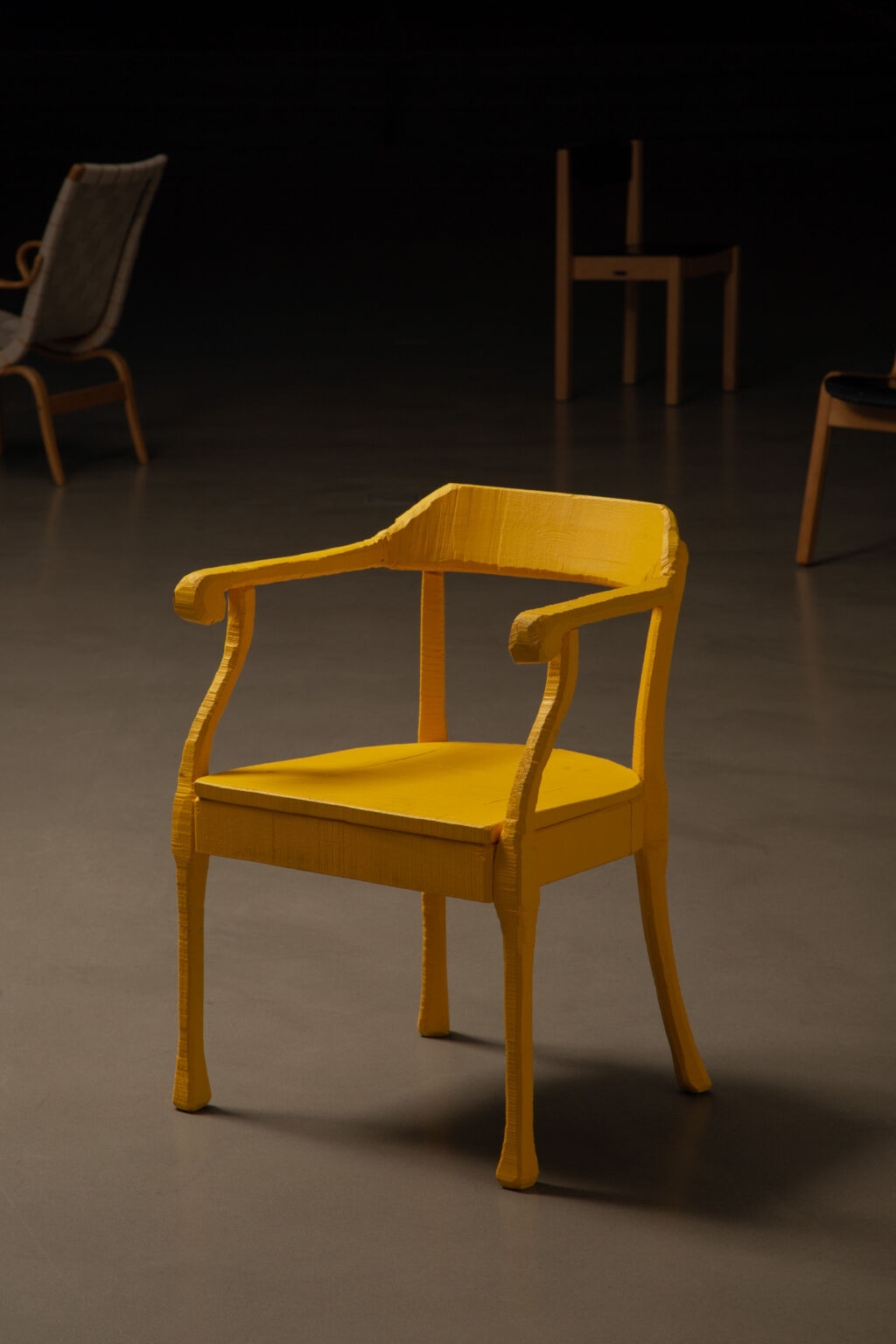Since its founding, the Röhsska Museum of Design and Craft has been acquiring different chairs in order to illustrate the prevailing interior design trends and ideals from various historical eras. In the open storage repository in the museum’s auditorium, 144 of the museum’s chairs from the seventeenth century to the present are on display.
The chair has alternated between being a utilitarian object and a decorative piece, so there is a broad variation in the museum’s collection. Visitors will find everything from ergonomic chairs to chairs that are practically impossible to sit on.
A brief history of the chair
The seventeenth century brought a transition from chests and built-in benches to movable furniture, which caused chair manufacturing to take off. During the eighteenth and nineteenth centuries, different chair types were developed in a variety of artistic styles, and in the twentieth century functionalism broke through and became widespread. Ergonomic studies of sitting were conducted, which led to the development of more functional chair types. During the second half of the twentieth century, chair design came to be an area of experimentation for many designers – a chance to let their imagination and playfulness run wild.
Vid bokade konferenser är stolsmagasinet tillfälligt stängt för besök.
Here are some of the chairs you’ll find on view in the museum:
Top image: Carl Ander, Röhsska Museum.
